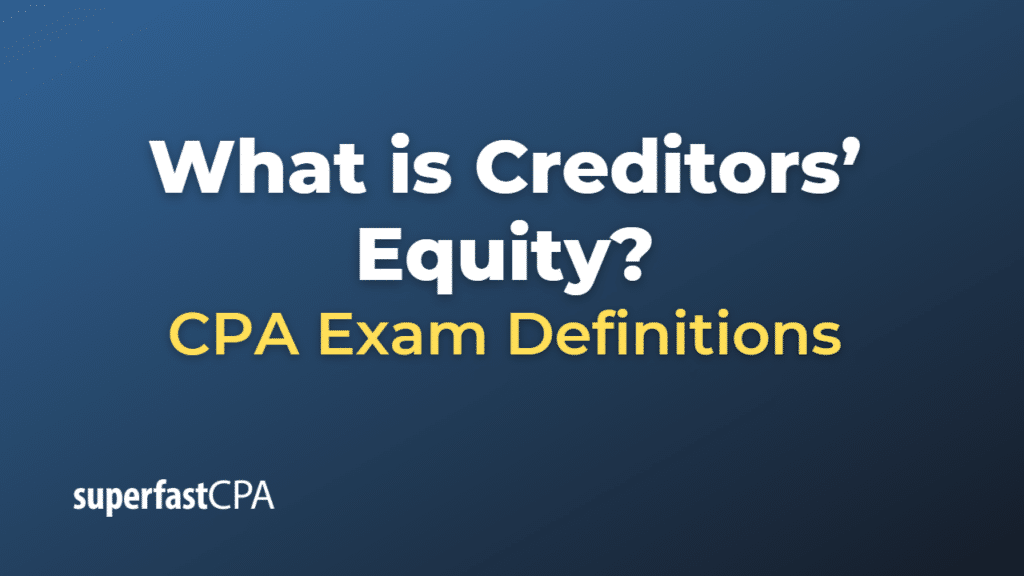Creditors’ Equity
“Creditor’s equity” is not a standard financial term that is commonly used in finance or accounting. It seems to blend two distinct concepts: creditors and equity.
- Creditors: As previously described, these are entities (individuals, businesses, or institutions) that lend money or extend credit to another party.
- Equity: In a financial context, equity typically refers to the ownership interest in a company, represented by its shares of stock. In the context of a company’s balance sheet, equity is the residual interest in the assets of an entity after deducting liabilities. It represents what would be left over for the owners (shareholders) if all assets were sold and all debts paid.
Perhaps you’re thinking of “creditors’ claims” or “creditor’s interest”, which would represent the amount of money a company owes to its creditors. Or maybe “shareholders’ equity”, which is the net assets of a company attributable to the shareholders.
In a bankruptcy context, creditors are often paid before equity holders, as equity holders have the most risk (but also potential reward) in a company’s financial structure.
If you could provide more context, I’d be happy to give a more specific or detailed answer.
Example of Creditors’ Equity
Let’s use an example to illustrate the concepts of creditors, equity, and how they interact, especially in the context of a company’s financial situation.
Consider a hypothetical company called TechWorld Inc. Let’s say that TechWorld Inc. has:
- Assets: $1,000,000 (This includes cash, accounts receivable, inventory, property, plant, equipment, etc.)
- Liabilities: $600,000 (This includes accounts payable, salaries payable, loans payable, etc.)
- Equity: $400,000 (This is calculated as Assets – Liabilities)
In this scenario, the “creditors” would be the entities to whom TechWorld Inc. owes the $600,000 in liabilities. These could be banks from which TechWorld has borrowed money, suppliers who have not yet been paid for goods or services, or employees who have earned but not yet received wages.
The “equity” represents the owners’ claim on the company’s assets after all liabilities have been paid. In other words, if TechWorld Inc. were to liquidate all its assets and pay off all its liabilities, $400,000 would theoretically be left over for the owners or shareholders of the company.
This example simplifies a lot of the complexity in real-world corporate finance, but it gives you a basic idea of the relationship between creditors, equity, and a company’s financial situation. In the event of bankruptcy, generally, the creditors’ claims would be addressed before any remaining funds are distributed to equity holders.













